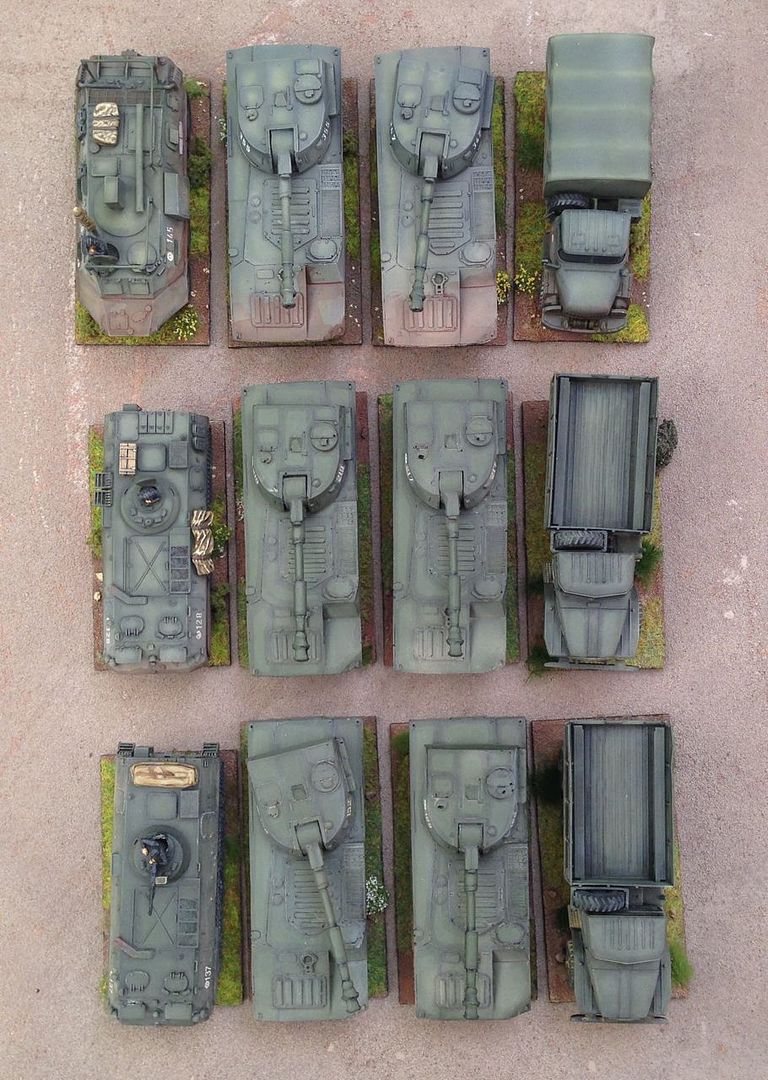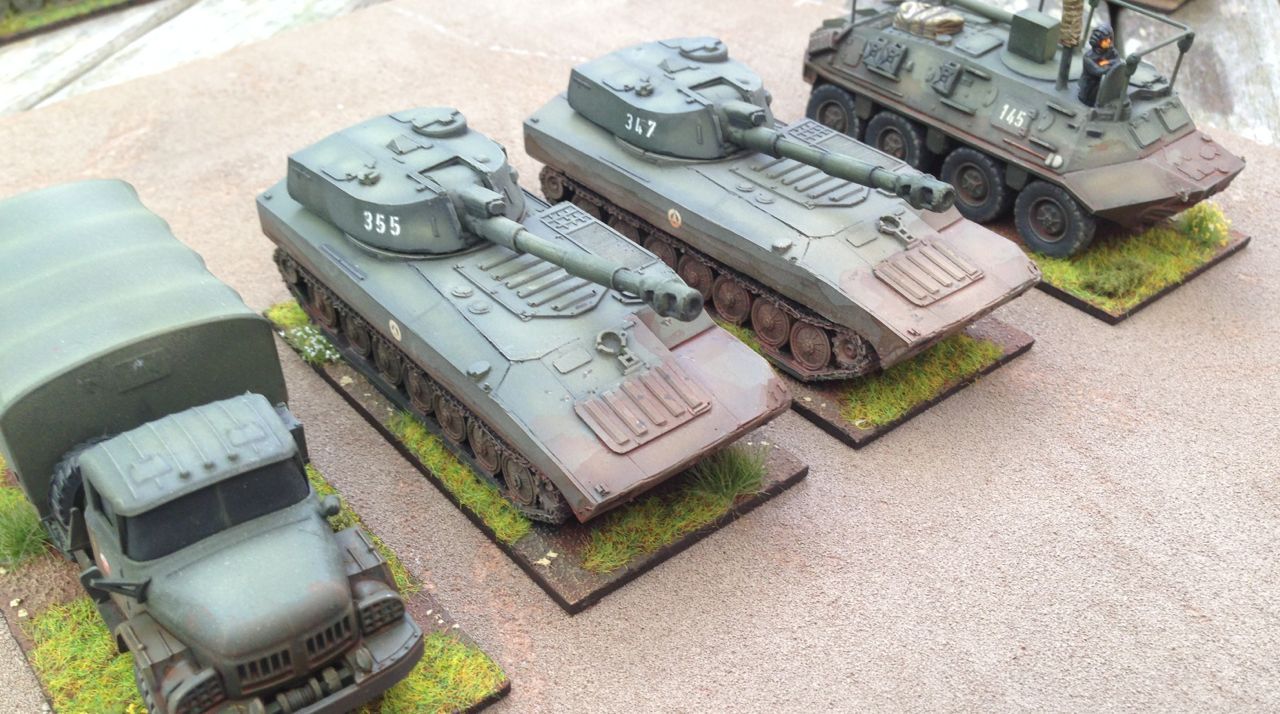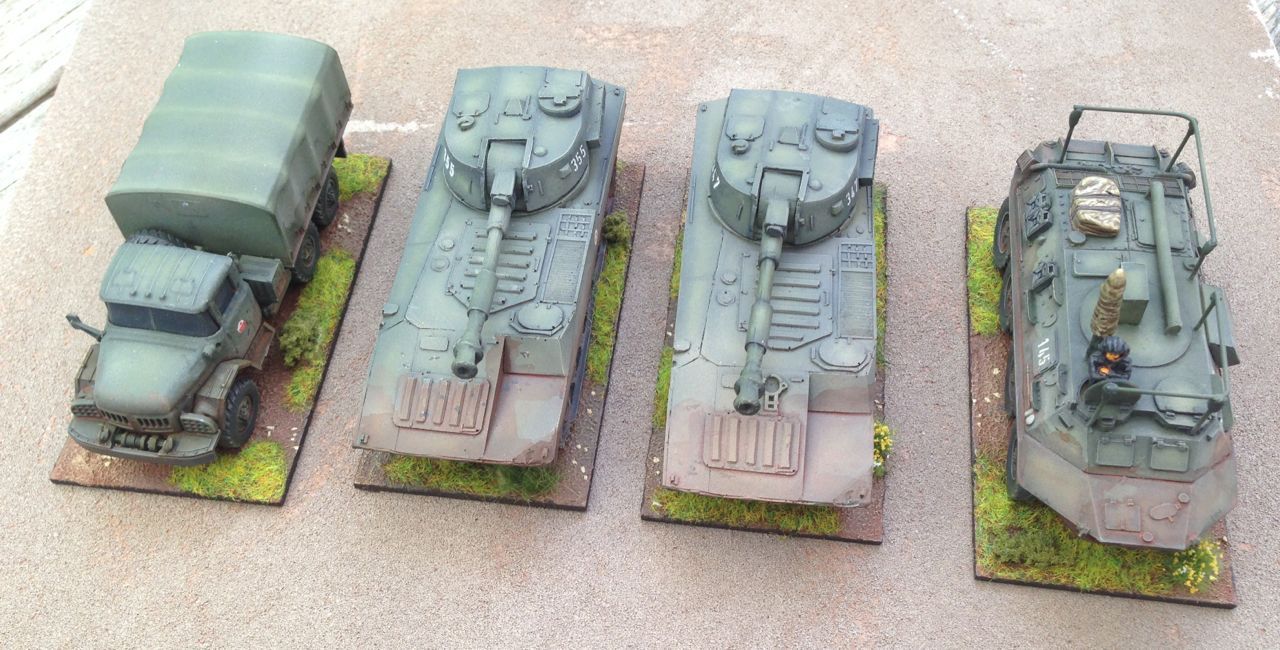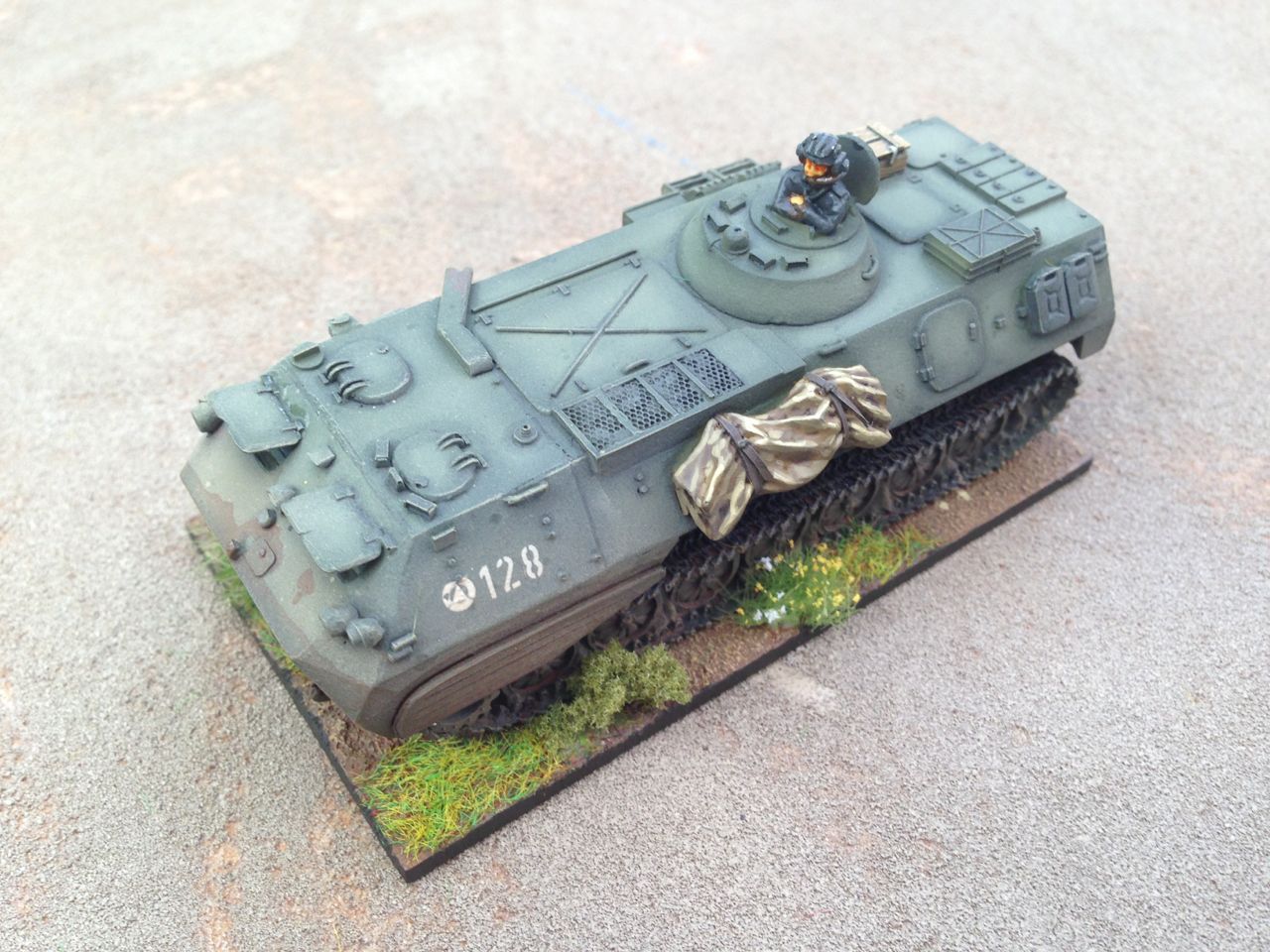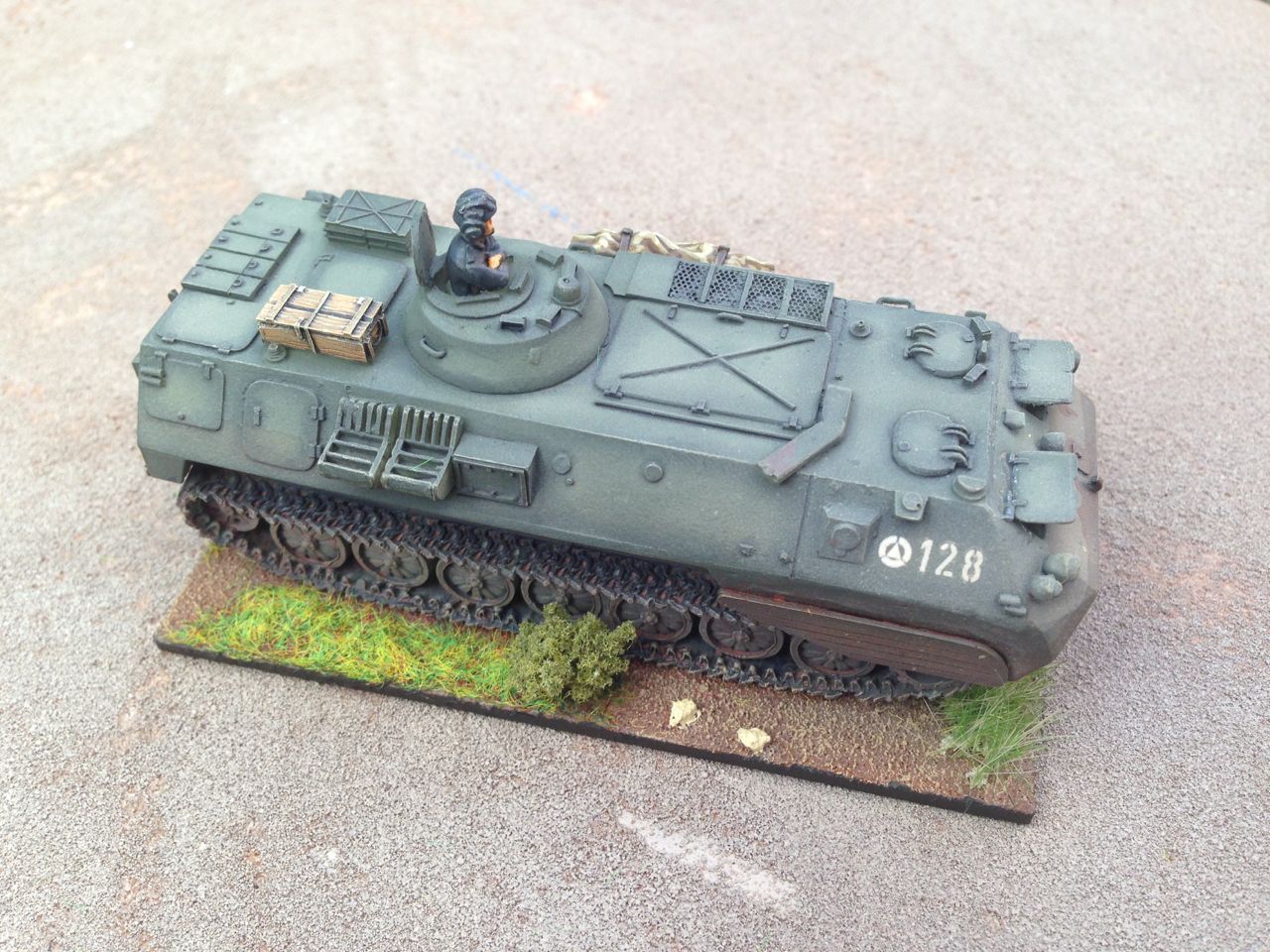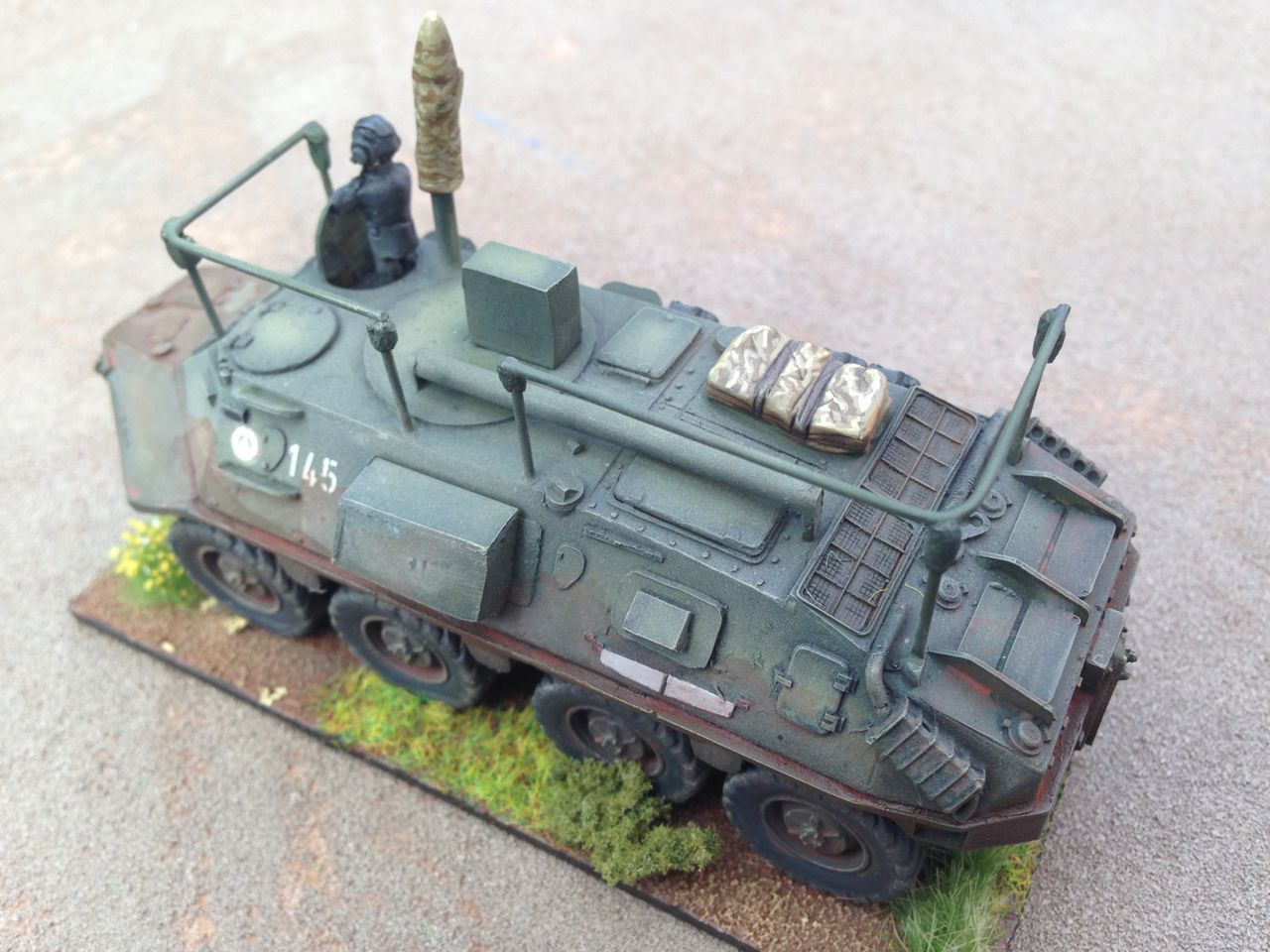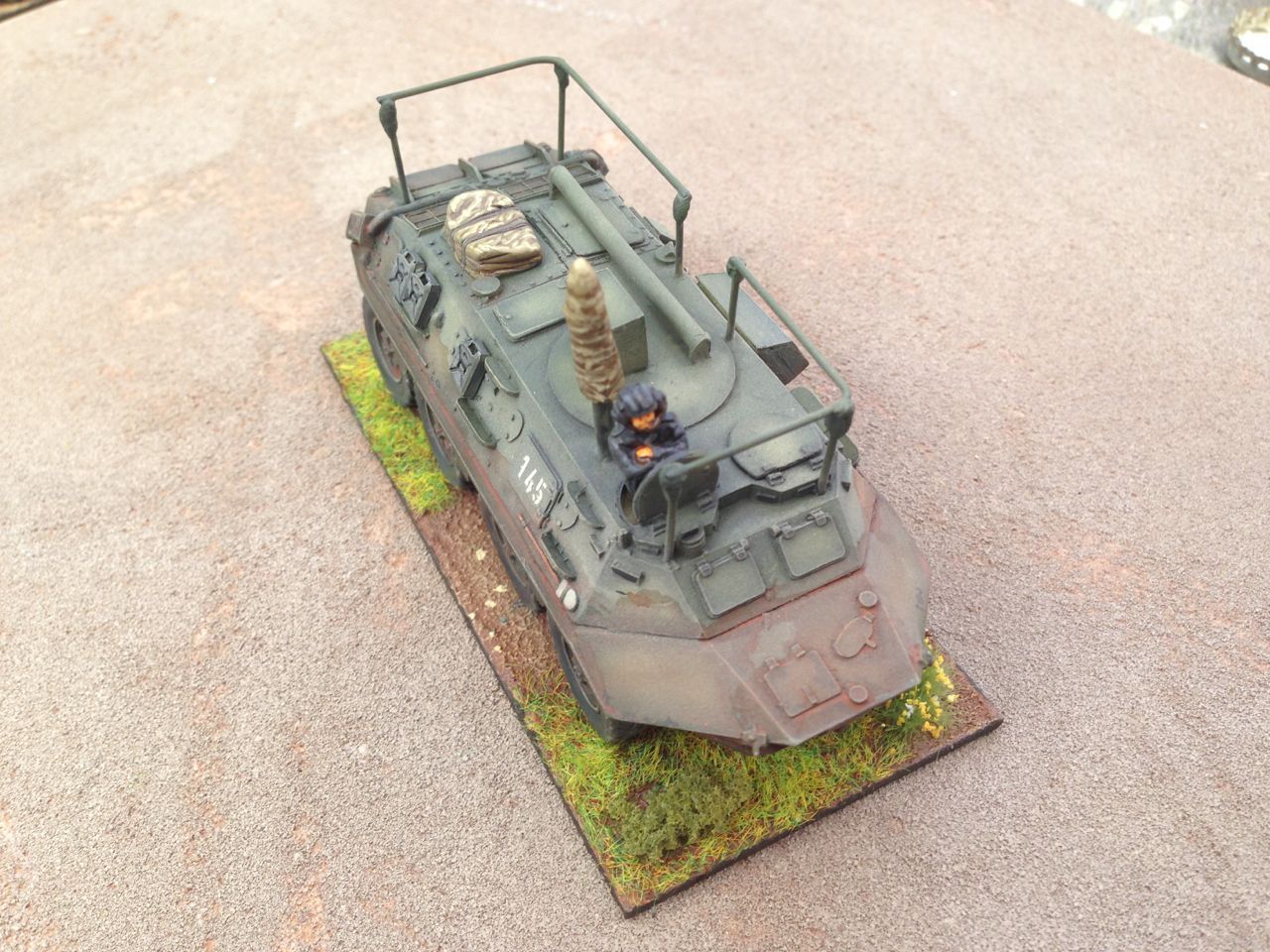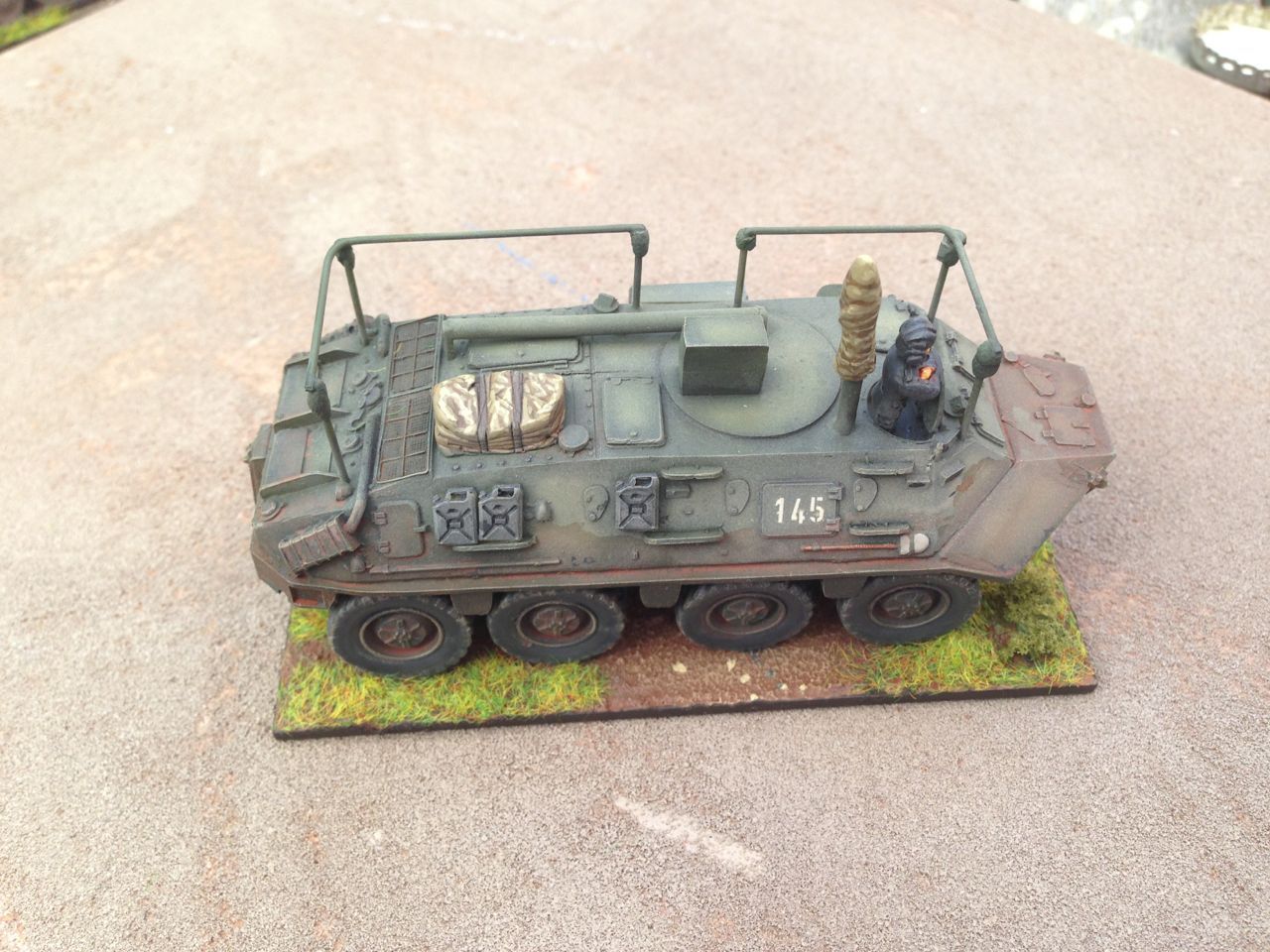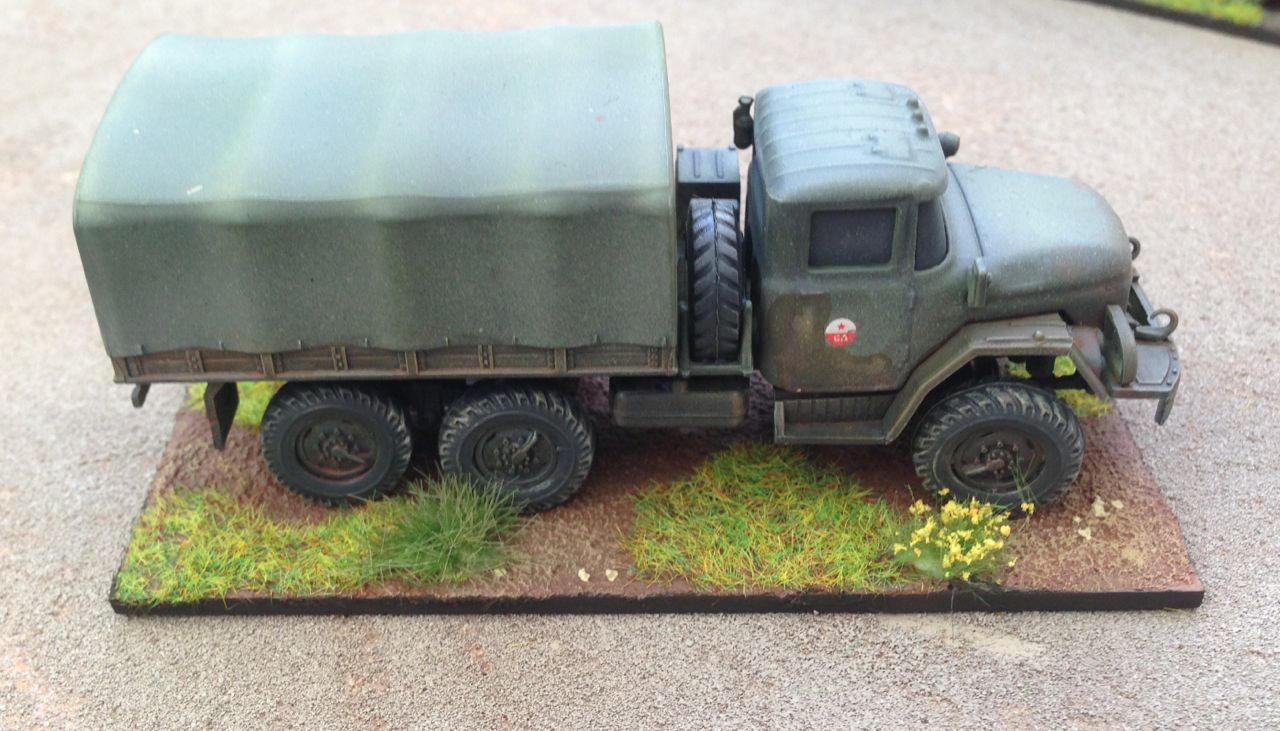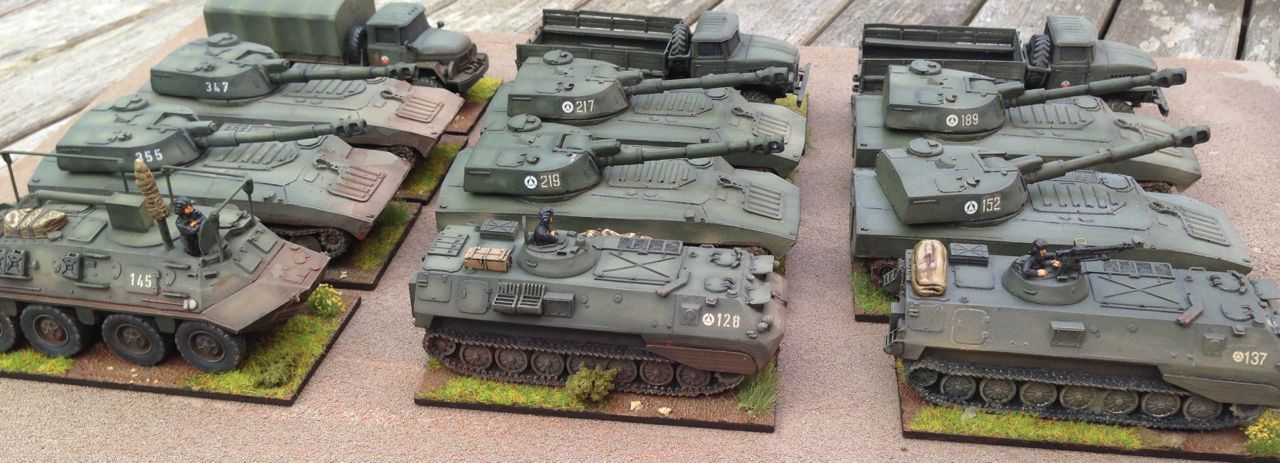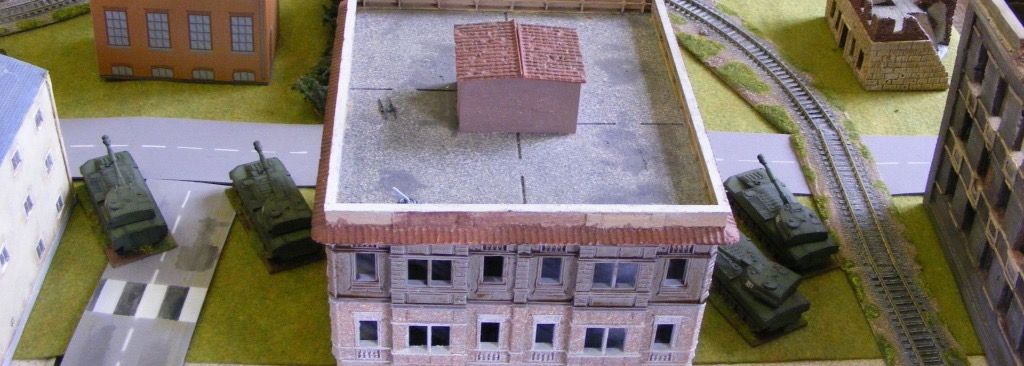Artillery units are a critical component of any Soviet force and whilst less flexible in terms of coordination of fire and OPs than their western counter parts this was less of a problem than might be imagined as it was nearly always available in overwhelming quantity. In order to play Soviets effectively you do need a reasonable number of guns and even in the late Cold War period these can routinely deploy in the direct fire role, so unlike western units could be a component of the on board force. In developing my views on the Soviet Breakthrough capability, I refined the Soviet Artillery Orbats for our adaption of the Rapid Fire rules and have been busy collecting models ever since. The first of the units to reach a completed state was the 2S1 battalion shown below.
At a representative model scale the battalion offers a few challenges as the organisation evolved over the period from 3 Batteries of 6 Guns to 3 Batteries of 8. This was a component of the Soviet response to NATO's mass proliferation of ATGWs and hand held anti tank weapons which the Soviets quickly realised would severely disrupt their operational tempo in the absence of weapons of mass destruction. As a consequence they focused on improving conventional artillery effects through maximising the weight of fire that could be delivered over short time periods to destructive effect. This was achieved through both the increased battery size and shifting to the battalion as the primary unit of fire. Having said that the upgraded capability had not been fully deployed across units in the Western TVD or even the forward groups of forces by the end of the Cold War.
After a deal of consideration around how to represent the 24 gun battalion, I plumped for the easy option and stuck with 3 batteries of 6 guns each represented by a couple of 2S1. 2S1 is the primary combat component of the battalion but at the level of representation chosen only equates to around 50% of the vehicles in the model battalion. I have used the S&S 2S1 for all my vehicles its a simple robust wargames model and a reasonable representation of the vehicle that paints up well. The only alternative that I am aware of is the ACE model which holds the distinction of being the only model from that company that I started but never finished, not an easy build.
As well as the Guns in each battery I also wanted to represent a reasonable number of Command and Observation Post vehicles which introduced the next challenge. I was keen to have a standardised battery organisation but the maximum number of OPs that a unit could deploy were around 6-7 so two vehicles at a scale of 1:3. The solution to this was the radio truck required by the WW2 rules, in this case a plumped for a BTR-60R-145M or BTR 60PU which was used extensively in unit headquarters. The remainder of the vehicles would then be deployable COPs using MT-LBus or ACRVs.
The ACRVs I have used here are from Cromwell and are very nice 1/76 scale wagons that look all right along side there 1/72 cousins. Sadly the vehicle is now OOP so my future battalions will largely be relying on the S&S version which is a somewhat simpler model. The vehicles have been stowed using green stuff or Goffy stowage items and are crewed by either Wee Friends or Elheim Soviet crew.
When I started this project the options for BTR 60's were limited to either Liberation which are a little under scale or the Hobby Den's both are resin and white metal kits. The representation is based on a simple conversion using plastic rod, plastic strip, brass rod and green stuff. Like the ACRVs and unusually for soviet vehicles these are often quite heavily stowed. The Crewman in this case is provide by Elhiem. Since building this S Models have now released a plastic BTR-60 and S&S have produced a nice little conversion kit for the Command variant, so making life easier for the next few iterations.
The final component in the battery is a truck either a Zil 131 or a Ural 4320, after making a lot of the ICM kits I have started to use a number of the Amercom Zil 131 ready mades no effort to build although painting over the all white UN schemes can be a challenge and quite time consuming of itself. The one shown here is an Amercom Zil 131.
So I intend for each battalion to comprise of 3 batteries and at the moment I am not representing the BHQ, primarily as a cost saving measure. The paint schemes are outlined in the review posts below and the markings come from a variety of sources, the regimental symbol is from the large model collect decal sheet and the numbers either from their or the QRF white numbers sheet, The markings on the truck doors are all from the decal sheets provided with the ICM kits. Hopefully the first of a number of Artillery battalions that will be working their way into the collection.
Related Posts:
ORBAT-Soviet Late 80's Breakthrough Capability, Part 3 Non Divisional Artillery Assets
ORBAT - Soviet Divisional Units, Part 2 MRD Artillery Regiment
TTP -Soviet Breakthrough Attacks
TTP - Soviet Advanced Guard and March Security
Wargames Unit - Soviet MRR, Regimental Artillery Group
TTP - Soviet Advanced Guard and March Security
Wargames Unit - Soviet MRR, Regimental Artillery Group
Modelling - Cold War Soviet Vehicle Markings and Decals
Modelling - Converting Hobby Dens BTR 60PB to a BTR 60PU
Review - Model 1/72, Cromwell MT-Lbu (ACRV)
Review - Model 1/72, S&S 2S1
Other Soviet Wargames Units:
Wargames Unit - Soviet Late 80's, Flame Thrower Company Group
Wargames Unit - 468 MSB, Divisional Forward Detachment at Waidhause
Wargames Unit -Soviet, Combat Helicopter Regiment, Assault Helicopter Squadron
Wargames Unit - Soviet, Combat Helicopter Regiment, Attack Helicopter Squadron
Wargames Unit - Soviet Late 80's Independent DShV Battalion
Wargames Unit - Soviet Late 80's MRB
Wargames Unit - Soviet MRR, Anti Tank Reserve
Wargames Unit - Soviet MRD, Anti Tank Battalion
Wargames Unit - Soviet MRR, Air Defence Battery
Wargames Unit - Soviet MRR, Recce Company
Wargames Unit - Soviet MRR, Regimental Artillery Group
Wargames Unit - Soviet early 80's MRB
Wargames Unit - Soviet VDV Regiment
Modelling - Converting Hobby Dens BTR 60PB to a BTR 60PU
Review - Model 1/72, Cromwell MT-Lbu (ACRV)
Review - Model 1/72, S&S 2S1
Other Soviet Wargames Units:
Wargames Unit - Soviet Late 80's, Flame Thrower Company Group
Wargames Unit - 468 MSB, Divisional Forward Detachment at Waidhause
Wargames Unit -Soviet, Combat Helicopter Regiment, Assault Helicopter Squadron
Wargames Unit - Soviet, Combat Helicopter Regiment, Attack Helicopter Squadron
Wargames Unit - Soviet Late 80's Independent DShV Battalion
Wargames Unit - Soviet Late 80's MRB
Wargames Unit - Soviet MRR, Anti Tank Reserve
Wargames Unit - Soviet MRD, Anti Tank Battalion
Wargames Unit - Soviet MRR, Air Defence Battery
Wargames Unit - Soviet MRR, Recce Company
Wargames Unit - Soviet MRR, Regimental Artillery Group
Wargames Unit - Soviet early 80's MRB
Wargames Unit - Soviet VDV Regiment
